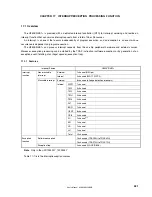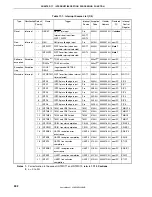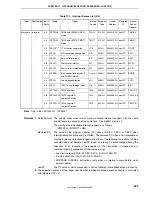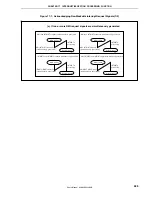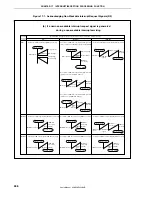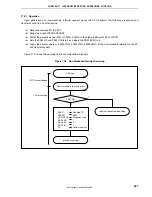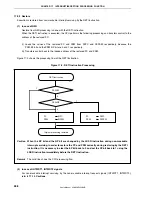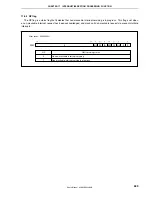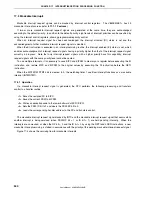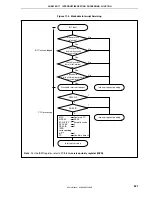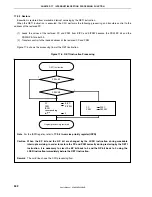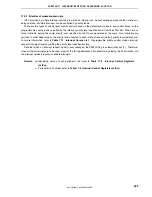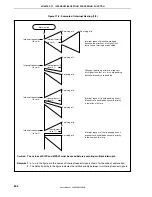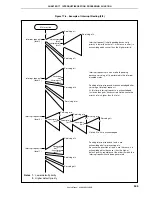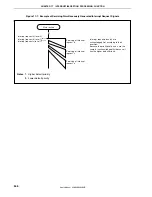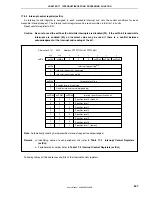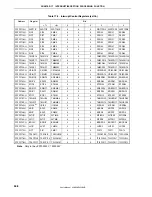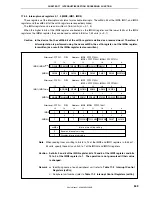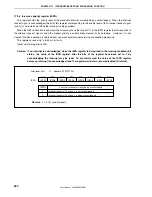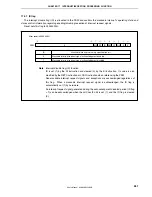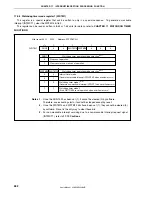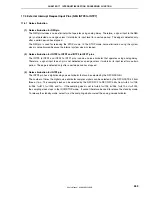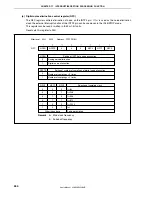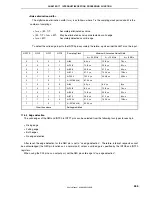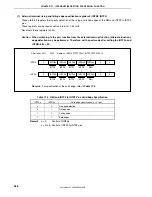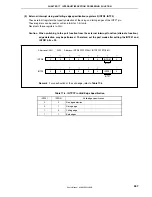
CHAPTER 17 INTERRUPT/EXCEPTION PROCESSING FUNCTION
User’s Manual U16896EJ2V0UD
545
Figure 17-6. Example of Interrupt Nesting (2/2)
Main routine
EI
Interrupt request i
(level 2)
Servicing of i
Servicing of k
Interrupt request j
(level 3)
Servicing of j
Interrupt request l
(level 2)
EI
EI
EI
EI
Interrupt request o
(level 3)
Interrupt request s
(level 1)
Interrupt request k
(level 1)
Servicing of l
Servicing of n
Servicing of m
Servicing of s
Servicing of u
Servicing of t
Interrupt request m
(level 3)
Interrupt request n
(level 1)
Servicing of o
Interrupt request p
(level 2)
Interrupt request q
(level 1)
Interrupt request r
(level 0)
Interrupt request u
(level 2)
Note 2
Interrupt request t
(level 2)
Note 1
Servicing of p
Servicing of q
Servicing of r
EI
If levels 3 to 0 are acknowledged
Interrupt request j is held pending because its
priority is lower than that of i. k that occurs after j is
acknowledged because it has the higher priority.
Interrupt requests m and n are held pending
because servicing of l is performed in the interrupt
disabled status.
Pending interrupt requests are acknowledged after
servicing of interrupt request l.
At this time, interrupt request n is acknowledged
first even though m has occurred first because the
priority of n is higher than that of m.
Pending interrupt requests t and u are
acknowledged after processing of s.
Because the priorities of t and u are the same, u is
acknowledged first because it has the higher
default priority, regardless of the order in which the
interrupt requests have been generated.
Notes 1.
Lower default priority
2.
Higher default priority

